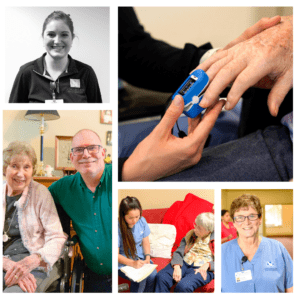Some people like to call physical therapy (PT) ‘personal torture’ or ‘pain therapy.’ These terms definitely exaggerate the true nature of PT. In reality, the short-term discomfort caused by PT allows patients to thrive in the future. Some patients don’t experience any discomfort during their PT sessions!
So, what is physical therapy?
What is Physical Therapy
Physical therapy is a type of therapy that uses evidence-based treatments to address injured parts of the body and restore functionality to them. In a nutshell, PT aims to relieve pain and allow people to get back to doing normal activities.
PT is extremely beneficial for the elderly and those coming out of serious accidents or surgery as it aims to restore independence to patients. Severe physical pain may also limit activities a patient can handle, pain PT can help mitigate.
How Do I Know if I Need Physical Therapy?
You may require physical therapy if you are experiencing pain or loss of motion. Generalized pain doesn’t immediately mean you need therapy. Well, then how do you know if you need PT?
The first step is to see your doctor. Your doctor will ask you questions related to your pain or soreness and tell you the next steps to take. This may require x-rays or other minor procedures to determine if PT or other treatment is necessary.
How can I get Physical Therapy?
Keep in mind that PT has different rules and regulations from state to state.
A doctor will order PT in the majority of cases. Doctors will order certain types of physical therapy and provide a list of PT nearby or in-network providers.
In states with more relaxed PT regulations, patients can simply go to a licensed PT clinic to be evaluated and potentially start therapy. The physical therapists themselves are able to conduct assessments and even order further testing in many of these states.
If you are unsure of what PT programs are available in your state, call your doctor’s office and ask your questions.
Where does Physical Therapy Take Place?
Physical Therapy programs and physical therapists can be found in a variety of locations. Some of the most common places physical therapists & related programs are found include:
-
Doctor’s Offices
-
Medical Group Offices
-
Hospitals
-
Retirement/Nursing Homes
-
Rehabilitation Facilities
-
Outpatient Clinics
-
Some Universities or Large Sports Programs
Does PT Hurt?
Different types of PT can lead to different levels of discomfort. Where some PT regimens are mild, others are intensive. It all depends on the needs of a given patient.
The stereotype of PT being painful can often be attributed to people using PT to quickly come back from serious injuries. These programs can cause temporary pain or discomfort due to the frequency of intensiveness of the program. Many PT pain stories come from athletes who want to put in hard work to quickly bounce back from an injury.
Keep in mind that physical therapy sessions are handled by licensed physical therapists. This means that an expert will be with you, making sure you are getting the care you need. PTs won’t let you do anything to hurt yourself and will listen to you if an exercise or activity causes pain.
Charlin Health Services
At Charlin Health Services we pride ourselves on honor, integrity, excellence, compassion, dignity, and trust. If you have any needs or questions about health services, hospice care, or other medical needs, please send us an email or give us a call.
About the Physical Therapy Expert
Anabel is a physical therapist at Charlin Health Services. She started her career as a sports therapist in the Philippines, working on rehabilitating injured athletes. Upon moving to the US, Anabel has worked as a licensed physical therapist at specialized care facilities in Illinois and Texas.
Anabel is an expert in PT for elderly patients recovering from injuries and recent surgeries. She also has experience working as a home healthcare therapist. Anabel has been with Charlin since 2018.



